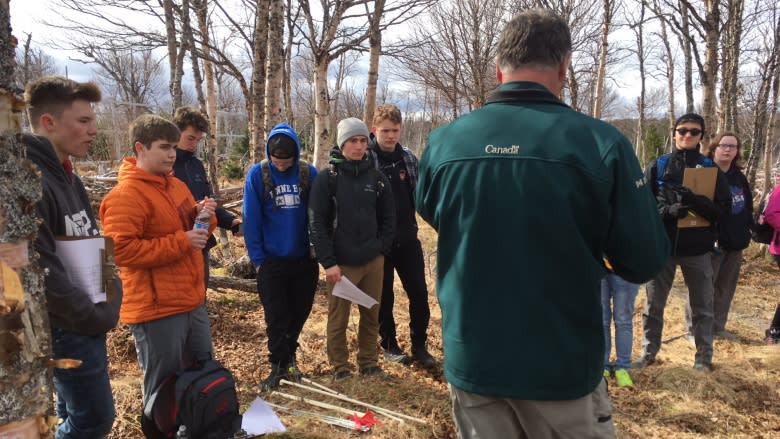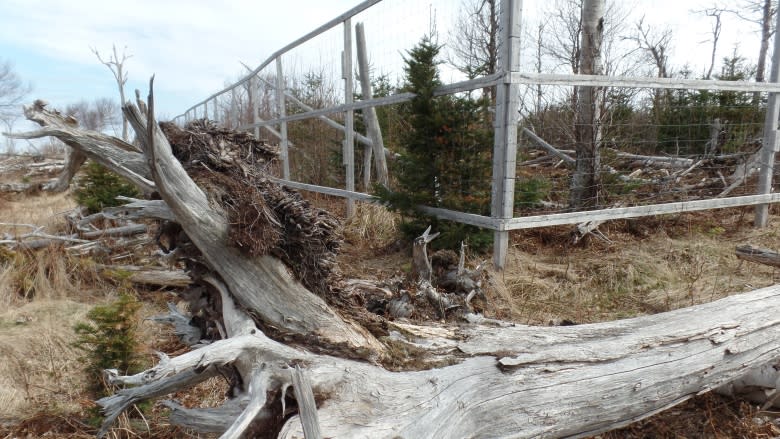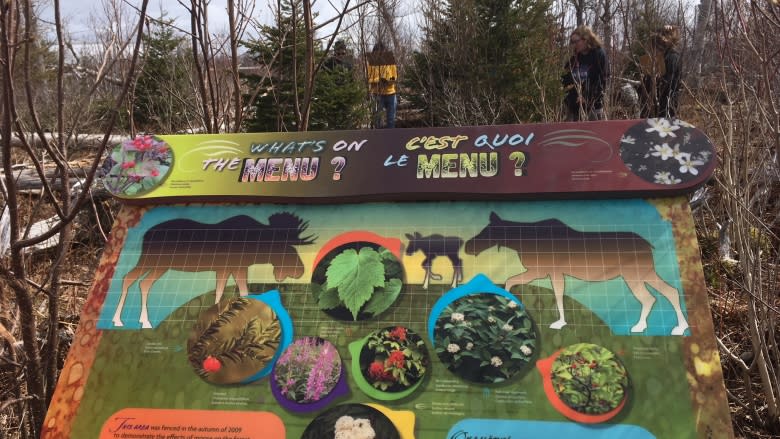Checking a science experiment, 7 years later
Students from Rocky Harbour on the west coast of Newfoundland are checking on a science experiment they started seven years ago
The group, from Gros Morne Academy, took a trip down memory lane — or in this case, Baker's Brook Falls Trail.
In 2011 the students, then in grades 3 and 4, went on a field trip to visit one of the moose exclosures built as part of the Forest Health Management Project.
They each got to pick out their own trees, both inside and outside the fence, to track growth and overall health over the next several years.
On Thursday, they returned to that exact same area to see how the trees are doing.
The kids have grown, and so have (some of) the trees.
"Back in Grade 4, I remember the tree being a lot closer to the ground. I used to be able to look up over it," said Nathan Shears, who's now in Grade 10.
"Now, I'm pretty close to six feet tall and the tree is a lot taller than me now, so it's definitely been growing."
As suspected, most of the trees inside the fenced area were able to grow and thrive, sheltered from the ever-hungry moose. Trees on the outside, like the one belonging to Grade 10 student Angela Howell, didn't fare so well.
"It's pretty dead. That's sad," said Howell as she surveyed the dry and shriveled tree she helped mark seven years prior.
"It's kind of cool, getting to see what happened over the years."
A solution to over-snacking
Covering a full hectare of land, the Baker's Brook Falls Trail moose exclosure is the largest of its kind within Gros Morne National Park.
It was set up prior to the 2011 moose reduction program to help ecologists understand the impact moose are having on vegetation.
"When we get to a point where we see vegetation starting to recover, we'll know that the forest is healthier and the moose population has been reduced, and at this point in time we're starting to see that," said Parks Canada ecologist Shawn Gerrow.
He said they're starting to see positive signs of forest regeneration as a result of an expanded moose cull. One telltale sign is the presence of Canada yew — a snacking favourite of the moose.
"The impacts of the hunt have reduced the population to a point now where we can just maintain it," he said.
Park officials estimated that the moose population has been reduced by 2,000 animals.
For love of the park
Gerrow said having the students involved in projects like these is less about the data collection, and more about instilling a love of the park in future generations.
"I think it's a great opportunity for students to understand the environment, and for us to try to instil the importance of parks and protected areas for maintaining ecosystems and ecological integrity," he said.
"Maybe someday, if you think about it, there could be a future ecologist in that group. It's pretty neat."










